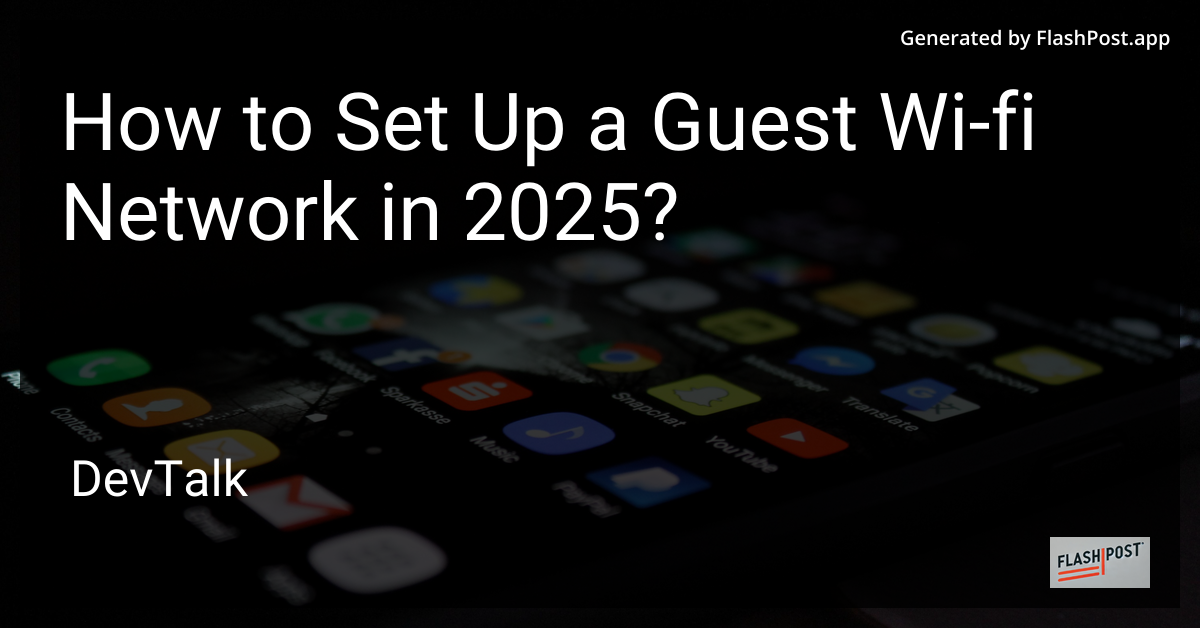How to Set Up a Guest Wi-fi Network in 2025?

How to Set Up a Guest Wi-Fi Network in 2025
In today's connected world, providing guests with their own Wi-Fi access is essential for both security and convenience.
A guest Wi-Fi network prevents visitors from accessing sensitive data on your main network while offering them seamless internet connectivity. This guide will walk you through the steps to set up a guest Wi-Fi network in 2025.
Why You Need a Guest Wi-Fi Network
The main reason for setting up a guest Wi-Fi network is to protect your primary network's privacy and security. With a separate guest network, you can prevent unauthorized access to your personal devices and files. Additionally, guest networks can help manage bandwidth usage without affecting your primary network's performance.
Setting Up Your Guest Wi-Fi Network
Step 1: Access Your Router’s Settings
Begin by accessing your router's settings. Typically, this is done by entering the router's IP address into a web browser. The default IP is often something like 192.168.1.1 or 192.168.0.1, but you should check your router's documentation for specifics. Log in using your admin credentials.
Step 2: Enable the Guest Network Feature
Most modern routers include a guest network feature. Navigate to the Wi-Fi settings section in your router's interface and look for the option to enable a guest network.
Step 3: Configure Guest Network Settings
Here are some of the settings you'll need to configure:
- SSID (Network Name): Choose a recognizable but generic name for easy identification.
- Security Protocol: Enable WPA3 for the highest level of security.
- Password: Set a secure password. Avoid using personal information or easily guessed words.
Step 4: Set Usage Limits
To ensure that your main network's performance isn't compromised, configure usage limits:
- Bandwidth Limitations: Restrict the bandwidth available to the guest network.
- Time Schedules: Specify hours when guests can use the network.
Step 5: Isolate the Guest Network
For added security, ensure that guests cannot access your main network resources. Look for a setting labeled "AP Isolation" or "Client Isolation" and enable it to isolate guest devices from each other and your primary network.
Step 6: Test the Network
Once configured, connect a device to the guest network to ensure it functions as expected. Test the internet connection speed and stability.
Additional Resources
Setting up a guest Wi-Fi network isn't the only way to optimize your home network. Here are additional guides to enhance your network setup:
- Discover how to set up a network for smart speakers for a fully connected home experience.
- Explore the Wi-Fi printer installation guide to streamline your printing tasks.
- Enhance your energy savings with a Wi-Fi enabled thermostat setup.
Conclusion
Creating a guest Wi-Fi network is a smart way to secure your primary home network while providing visitors with the internet access they need. By following these steps, you'll ensure a safe and seamless experience for both you and your guests.
For more networking insights, check out these related topics:
- Learn how to connect an all-in-one printer to Wi-Fi for efficient home office setup.
- Understand the differences between Bluetooth and Wi-Fi speakers to choose the right devices for your home.
Ensure your home remains connected and secure with a properly configured guest Wi-Fi network.